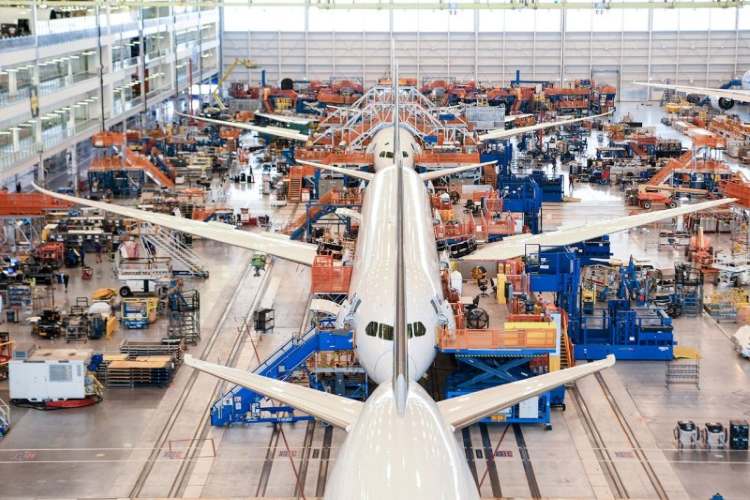India’s aviation journey has been remarkable. From its humble beginnings in 1912 with the first commercial flight in Allahabad, the country has ascended to become one of the fastest-growing aviation markets in the world. Now, the government is preparing for the next leap—transforming India from a vast market into a global leader in aerospace manufacturing.
Speaking at the International Air Transport Association (IATA) annual general meeting in Delhi, Prime Minister Narendra Modi urged the world to look beyond India as just a market. The country, he said, should be seen as a critical node in the global aviation value chain. Make in India must evolve into ‘Design in India’, he argued, highlighting the opportunity India offers to global aviation firms—not just in sales, but in aerospace manufacturing, engineering, and innovation.
READ I India’s EV future: Promise, pitfalls, and policy gaps
A bold aspiration, a tough road
The ambition is audacious. Even China, with its massive state-led investments, has yet to master the manufacturing of commercial aircraft or high-performance jet engines. Despite notable progress, China still lags behind aerospace giants like Boeing, Airbus, Rolls-Royce, and Pratt & Whitney. Precision manufacturing, proprietary metallurgy, and system integration remain weak links in Beijing’s aerospace ambitions.
China’s innovation model—largely based on adaptive engineering rather than ground-up invention—has struggled to create products that are globally emulated. Its strength in producing consumer goods has not translated into the high-end aviation sector, which demands decades of experience and billions in R&D.
India faces a steeper climb. It began modernising its aerospace manufacturing industry relatively late and has historically concentrated on defence-related aviation, with state-run Hindustan Aeronautics Limited (HAL) focusing on military projects. That expertise has not yet spilled over into the commercial domain. More crucially, India’s R&D investment remains at just 0.7% of GDP—well below the over 2% spent by both the U.S. and China—hampering long-term innovation, especially in high-performance engines and avionics.
Building a civil aviation ecosystem
Nonetheless, India has reasons to be optimistic. It is now the world’s third-largest aviation market, with aircraft manufacturers sourcing billions of dollars in components and services from Indian firms. Boeing and Airbus have significantly increased their engagement, and global supply chain diversification is playing to India’s advantage.
To tap into this momentum, the government is targeting high-growth segments within the aviation value chain. PM Modi identified maintenance, repair, and overhaul (MRO) services as a “sunrise sector” and outlined plans to develop a $4 billion MRO hub by 2030. Recent legislative changes have also created a more attractive environment for global aircraft leasing firms, bolstering India’s position as an aviation finance hub.
India’s demographic dividend—particularly its pool of engineers in fields like AI, robotics, and clean energy—combined with a proactive policy regime, could give it an edge. But the government knows that building a competitive aerospace ecosystem will take time.
From helicopters to airframes
Concrete steps are already visible. The UDAN scheme has deepened regional connectivity, fuelling demand for smaller aircraft and creating opportunities for domestic manufacturing. Public-private partnerships are bearing fruit: Tata Advanced Systems, in collaboration with Boeing, manufactures Apache helicopter fuselages; Airbus has partnered with Indian firms to supply components for the A320 and A350 platforms.
In a significant development, Tata and Airbus are also establishing a helicopter assembly line in Karnataka, following their military aircraft facility in Gujarat. These moves represent a pivot from dependency to self-reliance, and lay the foundation for India to eventually build commercial aircraft domestically.
The timing could not be better. A growing economy, a 1.4 billion-strong population, and an increasingly mobile middle class mean India’s air passenger traffic is projected to grow at 6.2% annually until 2040. The global supply-demand mismatch for commercial aircraft creates a strategic opening for India to stake a claim.
Aerospace manufacturing bet
That India is not just a passive market is evident from the substantial investments made by global majors. Boeing, for instance, inaugurated its largest R&D facility outside the US in Bengaluru—a Rs 1,600 crore, 43-acre campus. Airbus has likewise deepened its manufacturing ties through local sourcing and joint ventures.
Such partnerships are crucial to developing domestic capabilities. But India’s success will ultimately depend on cultivating deep supply chains, proprietary technologies, and specialised skillsets. The leap from assembling components to building full-fledged aircraft and engines will require sustained state support, significant capital, and global collaboration.
India would do well to study China’s missteps—especially its over-reliance on top-down industrial policy and the challenges of replicating complex systems without an innovation ecosystem. A realistic, phased approach—backed by global partnerships and driven by commercial rather than strategic logic—is more likely to succeed.
The vision of Make in India and Design in India is not misplaced. But achieving it will demand more than vision—it will require resilience, patience, and an unrelenting commitment to building the long game of Indian aerospace.

